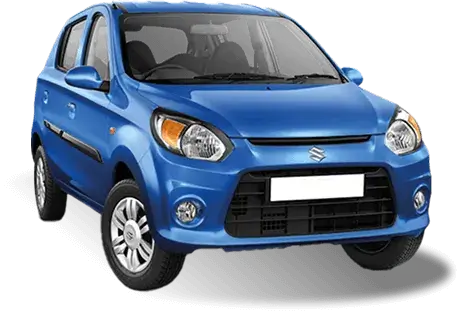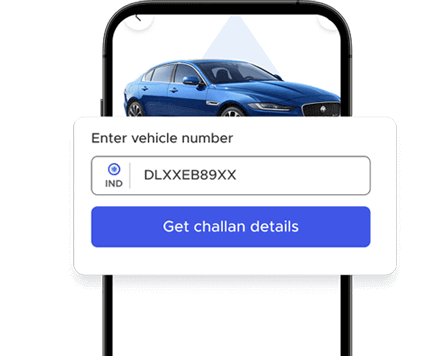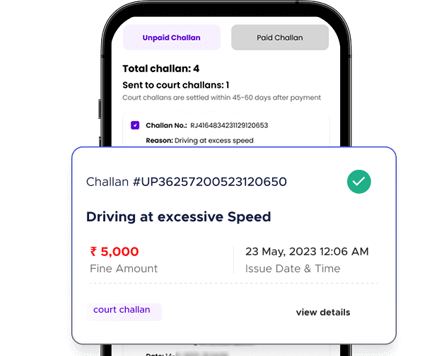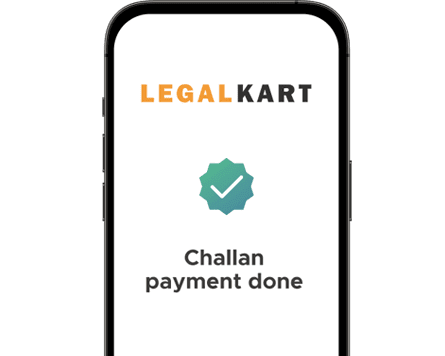Check Traffic Challan & Pay Online
Quick, Easy and secure payments for your traffic challan.

Enter your vehicle number

15,85,490
Challans are settled by Legalkart & supported by Millions of IndiansWhat our customers are saying

It was a great experience on Just Consult at LegalKart; I made a call at 1 am in the morning and I was able to speak to a learned lawyer; I am really impressed by the amazing 24/7 service wherein any one can clarify their doubt anytime of their convenance.

Excellent online consultation & that too anytime. What an amazing technology! Now I have a Dial-in Number saved on my phone and I can call anytime and speak to a lawyer. I have already recharged my account with 60 minutes.

Got a reference from my friend about LegalKart just consult and the 24/7 legal advice. I spoke a lady lawyer she guided me pretty well, cleared all the doubts I had. I give a big shout out to all who need a confidential and secure legal advice. Just Consult is the go to solution for all your problems.

I am super impressed with LegalKart’s 24/7 technology to talk to a Lawyer. I spoke to three lawyers on my issue and they are thoroughly professional and prompt.

Just an amazing and super-fast legal consultation. I was able to talk to a Lawyer at the middle of the night.

Advocate on Just Consult was quite expert and knowledgeable in divorce matter she explained to me everything so well and help me to understand the legalities and consequences.

Just Consult Lawyer provided me with all the possible solutions for my query. I really liked the way he has given me solutions after patiently hearing me.
Check Challan Status By your Area
Terms and Conditions for Online & Offline Challan Payments on LegalKart
Trusted by users from over 80 countries
730k+
Completed calls with
Lawyers
24X7
Positive Lawyer
Calls
4.8/5
Average expert lawyer
star rating
Pay challan in 3 easy steps

Enter your vehicle number
Quickly provide your vehicle details to begin.
View challans for your vehicle
Check all pending challans for your vehicle.
Pay your challans using LEGALKART
Settle your challans securely and hassle-free.Points to remember
Timely payment
It’s important to pay your challans promptly to avoid additional penalties and legal issues.Verify challan details
Before making a payment, always double-check the challan information to ensure accuracy and avoid disputes later.Keep receipt
Always save the payment receipt as proof in case you need to reference it for future verification or legal matters.Check Traffic Challan & Pay Online
Quick, Easy and secure payments for your traffic challan.

Enter your vehicle number

15,85,490
Challans are settled by Legalkart & supported by Millions of Indians
Check & pay your
challan
Disclaimer: you will receive a call from our agent asking for m-parivahan OTP to settle your challan.
Terms and Conditions for Online & Offline Challan Payments on LegalKart
Pay challan in 3 easy steps

Enter your vehicle number
Quickly provide your vehicle details to begin.
View challans for your vehicle
Check all pending challans for your vehicle.
Pay your challans using LEGALKART
Settle your challans securely and hassle-free.Points to remember
Timely payment
It’s important to pay your challans promptly to avoid additional penalties and legal issues.Verify challan details
Before making a payment, always double-check the challan information to ensure accuracy and avoid disputes later.Keep receipt
Always save the payment receipt as proof in case you need to reference it for future verification or legal matters.Frequently asked questions
Journey of our Success
5.5L
Responsible citizensPaid challans
100%
Authentic GovernmentData
Hear what our users
have to say
Keep your phone ready! You will receive a call for OTP verification within 3 days. Provide the OTP during the call to complete your challan payment.




